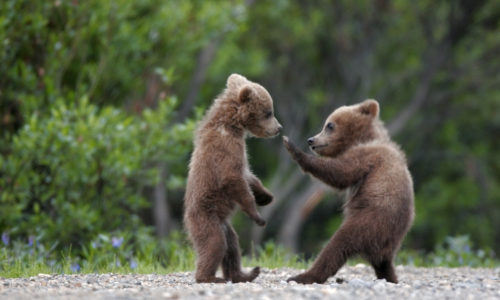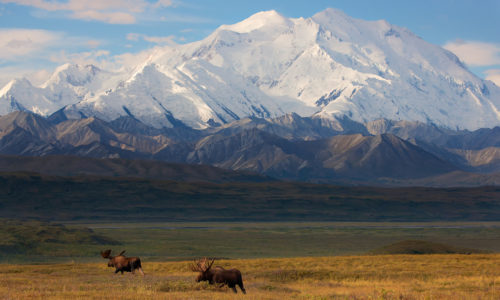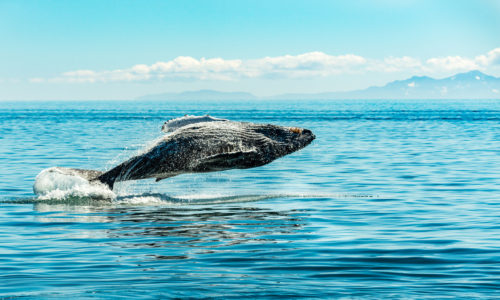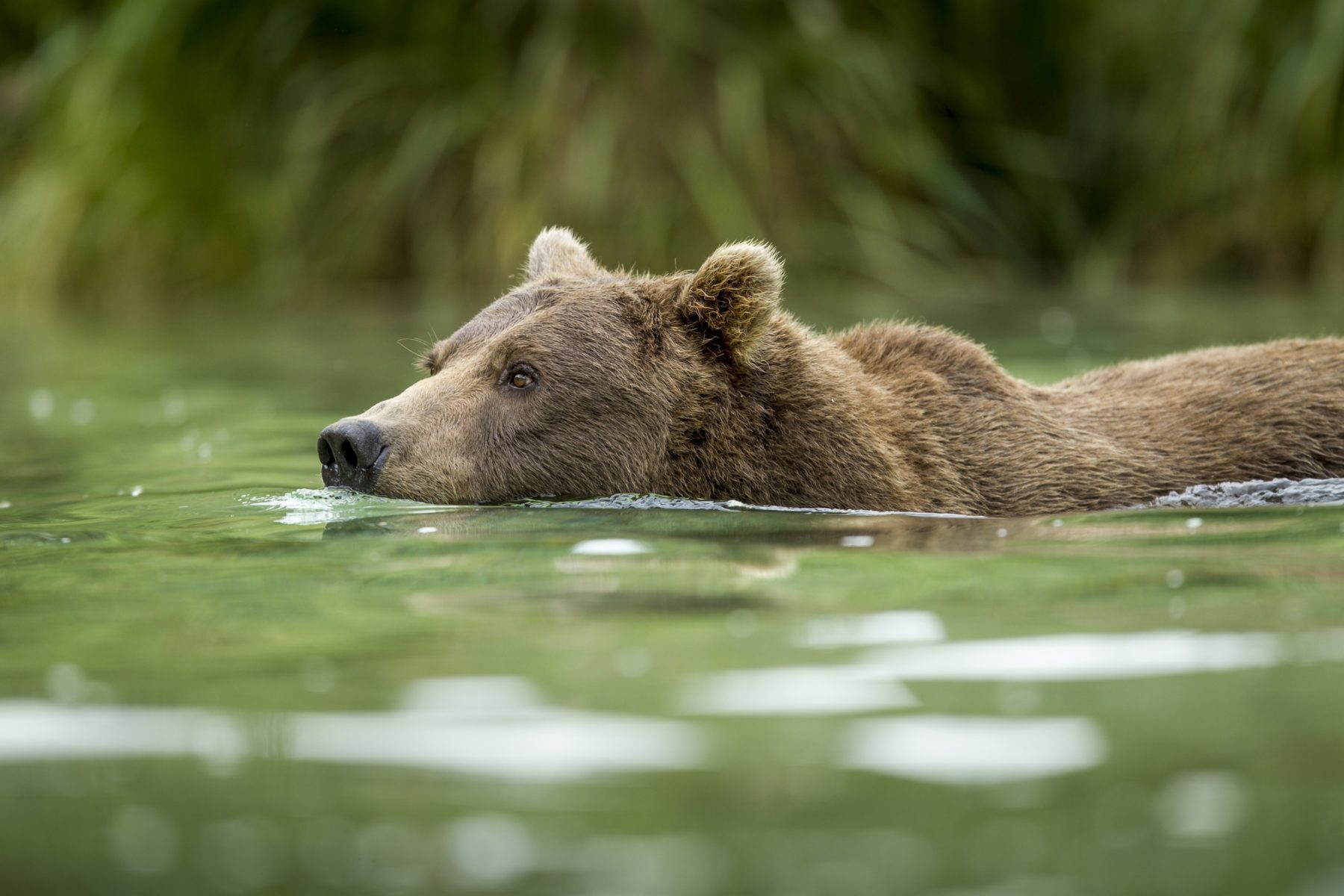Think seeking out the Big Five is only for Africa? Think again. Alaska’s majestic creatures will wow any wildlife enthusiast, and THESE big five are sure to impress. From a lumbering grizzly hunting for salmon along the shoreline to the iconic moose casually strolling in the shadow of Denali – these animals are a representation of Alaska – magnificent, wild, and free.
 Grizzly (Brown) Bear
Grizzly (Brown) Bear
Of the 55,000 grizzly bears in North America, approximately 30,000 of them reside in the great state of Alaska – offering visitors ample opportunities for bear sightings. The formidable grizzly is a sub-species of the brown bear and is often referred to interchangeably – the main difference between the two being geographic location. July through September is usually the best time to view bears in Alaska, although those months vary depending on the specific regions within the state. Bears can often be spotted at popular feeding locations throughout Alaska, from the Fortress of the Bears on Admiralty Island to Katmai National Park and its famous Brooks Falls. If you want to beachcomb alongside the bears, the miles of Lake Clark National Park’s coastline offer just that – space for you to stroll on the sand while the bears dig for clams nearby.
Dall’s Sheep
Dall’s sheep (or Dall sheep) can be found living within Alaska mountain ranges and are recognized for the curved horns found on males (or Rams). These sheep can be seen feeding or resting along the ridges or dry meadows of Denali, and thanks to their stark white coats they can be viewed from a considerable distance. While Dall’s sheep may appear docile when innocently perched on a hillside – they can be seen kicking, jumping, and crashing their heads together as they violently compete for a mate each November.
 Moose
Moose
The largest moose in the world, Alaskan Moose have been known to grace international news cycles with their casual jaunts through downtown Anchorage. While more likely to stick to rural areas, it’s not hard to meet a moose in Alaska, with over 200,000 of them calling the great state home. Alaska’s official land animal, moose are formidable creatures with males reaching over 1,600 pounds and up to 6 feet in height. If you want to increase your chances of spotting moose, you may want to wake up early. Moose can be spotted near the edge of wetlands at dawn and dusk, often congregating in high numbers during summer months at Potter Marsh (20 minutes south of Anchorage), and Powerline Pass in Chugach National Park during the fall mating season.
Bald Eagle
Symbolizing strength and freedom throughout the United States, the bald eagle is Alaska’s largest bird of prey and one sought out for viewing by visitors of the Last Frontier. Boasting an enormous wingspan of up to 7.5 feet, bald eagles can be found along Alaska’s coastlines, islands, lakes and rivers. Often found circling above grizzlies as they hunt for salmon, bald eagles are opportunistic predators – not hesitating to steal fish or feast on tiny land mammals. Located within the Chilkat Bald Eagle Preserve, the best place for viewing these impressive birds of prey is along the river flats of the Chilkat River, along the Haines Highway between miles 18 and 24. This 48,000-acre preserve protects the largest known gathering of bald eagles in the world and witnessing the countless birds in the trees lining the river is truly remarkable.
Humpback Whale 
The mighty humpback whale cruises the waters of Alaska during the summer months, with the best time for viewing through June and July. Humpbacks can be spotted in the Bering Sea, Aleutian Islands, Prince William Sound, Glacier Bay and throughout the Inside Passage of Southeast Alaska. This gargantuan sea mammal can weigh up to 80,000 pounds and extend 45-50 feet in length. One of the most vocal whale species, Humpback males sing unique songs underwater, often up to 20 minutes in length and repeating for several hours. Originally thought to be mating calls, these songs puzzle the marine biologists who study the whales, with various theories offered as to why the whales perform their acoustic renditions. One of the most spectacular occurrences to witness is humpback whales bubble net feeding. The process involves a group of whales creating a net of frothy bubbles at the surface of the water to confuse their prey, then swimming through the center with their jaws wide open to scoop up the fish.
While we may have outlined our Top 5 Animals of Alaska, there are countless more that deserve an honorable mention – and are magnificent to witness in person! From harbour seals to porpoises, killer whales and puffins, Alaska boasts a unique and diverse animal population that can be seen just about anywhere throughout the state. Whether you’re soaring high above a mountain range spotting moose or sheep, riding in a boat in search of whales or keeping your distance on the ground in front of a hungry grizzly bear, we hope you’re just as enchanted with the wildlife of Alaska as we are.
